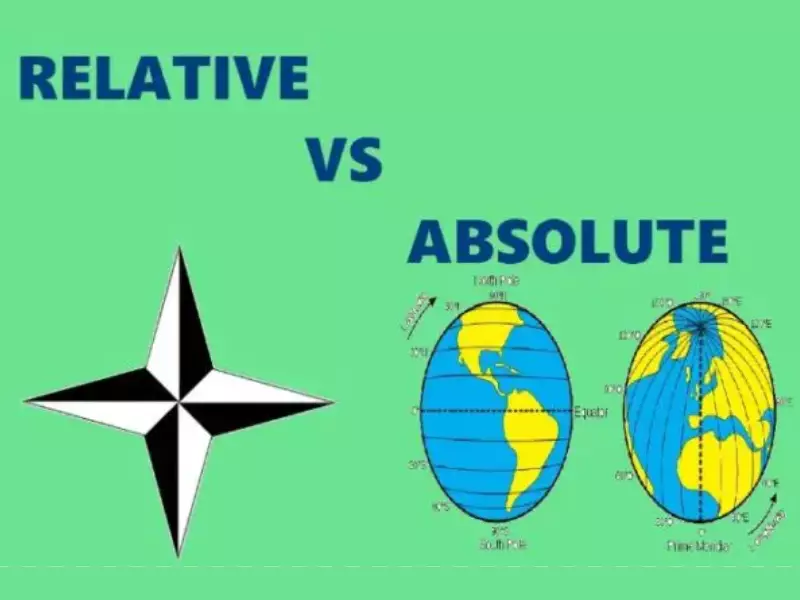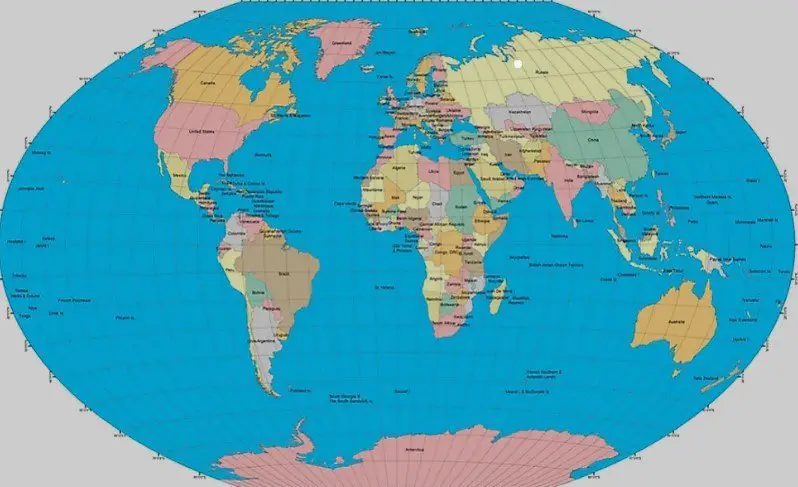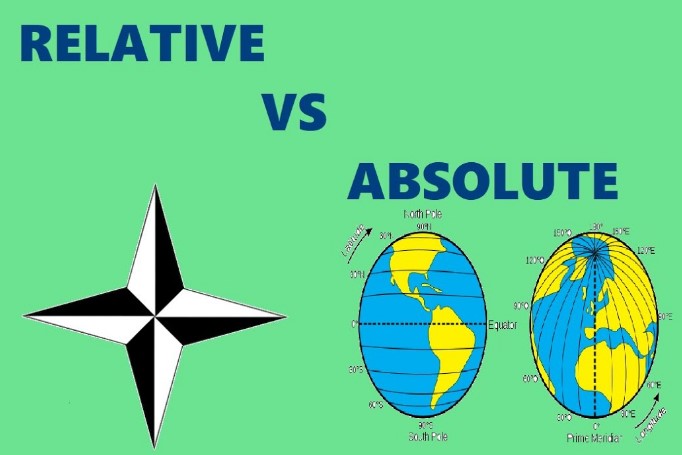Geographical concepts shape our understanding of the world, offering a framework through which we interpret our surroundings and navigate the vastness of the planet. Among these concepts, the notions of absolute and relative location serve as foundational pillars, enabling us to pinpoint places and understand their contexts within the broader tapestry of the Earth’s surface.
Absolute location refers to the exact coordinates of a place on the Earth’s surface, typically expressed in latitude and longitude. This system of measurement provides a universal language for locating any point on the globe with precision. In contrast, relative location describes a place’s position in relation to other locations, relying on contextual information rather than mathematical coordinates. It speaks to human experiences and the interconnectedness of places through social, economic, or geographical relationships.
These two concepts of location not only help us find our way but also deepen our connection to the world. Absolute location allows for precise navigation and mapping, while relative location offers insight into the cultural, economic, and environmental factors that bind different places together. Understanding both is crucial for comprehending the complex web of connections that defines our global society.

Location Basics
Absolute Location
Definition and Significance
Absolute location is the precise, fixed point of a place on the Earth’s surface, identifiable by a set of coordinates. These coordinates, given in latitude and longitude, provide a universal method for locating anything, anywhere on the globe. The significance of absolute location lies in its precision and universality, offering an exact reference that transcends language and culture.
How It’s Determined (GPS Coordinates)
The Global Positioning System (GPS), a network of satellites orbiting the Earth, is instrumental in determining absolute location. A GPS receiver, found in many modern devices, calculates its exact position by triangulating signals from multiple satellites. This system can pinpoint location to within meters, making it indispensable for navigation, mapping, and much more.
Relative Location
Definition and Contextual Importance
Relative location describes a place’s position in relation to other locations. It uses terms like “north of,” “close to,” or “within walking distance from” to convey location. Unlike absolute location, it is subjective and varies based on personal perspective or context. Relative location’s importance lies in its relevance to human experiences, helping us understand spatial relationships and connections between places.
Examples of Usage
- Directions: “The library is across the street from the post office.”
- Travel: “Our hotel is near the Eiffel Tower.”
- Local businesses: “The new cafe is next to the city park.”
These examples highlight how relative location provides contextually rich information, facilitating communication and understanding in everyday situations.
Key Differences
Comparison Table
| Feature | Absolute Location | Relative Location |
|---|---|---|
| Basis | Coordinates (latitude and longitude) | Relation to other places |
| Determination | GPS and maps | Descriptions and landmarks |
| Change | Static | Can change based on perspective |
| Use | Navigation, mapping | Directions, understanding context |
Impact on Navigation and Mapping
The impact of absolute and relative location on navigation and mapping is profound. Absolute location, with its precision, is crucial for GPS navigation, allowing for pinpoint accuracy across the globe. Relative location, on the other hand, enriches our understanding of a place’s contextual significance, making it invaluable for local navigation and planning. Together, they form a complete picture, essential for effective navigation and comprehensive mapping.
Absolute Location in Detail
Coordinates System
Latitude and Longitude Explained
The Earth is divided by imaginary lines called latitude and longitude, creating a grid that can pinpoint any location. Latitude lines run east-west and measure north-south position, while longitude lines run north-south and measure east-west position. This system is the foundation of absolute location, providing a clear, numerical method to describe any place on Earth.
Global Positioning System (GPS)
The Global Positioning System (GPS) uses this coordinate system to offer real-time location data. By receiving signals from at least three satellites, GPS devices calculate their position with remarkable accuracy, revolutionizing how we navigate our planet.
Use Cases
Emergency Services
In emergencies, the absolute location can be a matter of life and death. Emergency responders use GPS to locate callers quickly and accurately, ensuring rapid response times.
Scientific Research
Researchers rely on absolute location to study environmental changes, track wildlife, and conduct archaeological digs. Precision is key in these endeavors, making absolute location indispensable.
Relative Location in Detail
Contextual Importance
Human Geography Perspective
From a human geography perspective, relative location is about understanding how places are connected culturally, economically, and socially. It provides insight into the relationships between places, influencing everything from trade routes to migration patterns.
Economic and Social Implications
The economic and social fabric of a community can be deeply affected by its relative location. Proximity to resources, markets, and other communities shapes local economies and social structures, highlighting the significance of relative location beyond mere physical space.
Use Cases
Directions and Travel
For travelers and locals alike, relative location makes navigating urban landscapes intuitive. It helps in finding landmarks, exploring neighborhoods, and connecting with the local culture.
Real Estate and Urban Planning
In real estate and urban planning, relative location determines value and development potential. Proximity to amenities, transport links, and other attractions makes certain areas more desirable, directly impacting urban growth and planning.

Importance in Various Fields
In Geography
Mapping and Exploration
The role of absolute and relative location is paramount in geography, serving as the backbone for mapping and exploration activities. Cartographers rely on precise absolute locations to create detailed maps that serve as navigational tools, educational resources, and planning aids. Explorers, from historical voyages to modern scientific expeditions, use these concepts to chart unknown territories, document findings, and share knowledge about different parts of the world. Understanding the exact and relative positions of places allows geographers to analyze spatial relationships, environmental patterns, and cultural connections, enriching our comprehension of the Earth’s surface.
In Technology
Location-Based Services and Apps
The surge of digital technology has brought location to the forefront of innovation. Location-based services (LBS) and apps utilize GPS and network data to offer users personalized experiences based on their current or desired locations. From navigation apps like Google Maps and Waze that guide millions daily, to social media platforms that allow geotagging and location-based searching, technology has made location information more accessible and useful than ever. Moreover, businesses leverage this technology for targeted advertising, delivery services, and customer engagement strategies, demonstrating the wide-reaching implications of location in the tech industry.
In Navigation
Modern Tools and Ancient Methods
Navigation encompasses a blend of modern tools and ancient methods, illustrating the evolution of how humans determine and utilize location. Ancient navigators used the stars, natural landmarks, and rudimentary maps to traverse seas and landscapes. Today, technology has equipped us with GPS devices, sophisticated mapping software, and digital compasses, significantly enhancing accuracy and reliability. However, the underlying principles remain the same, highlighting the enduring importance of understanding both absolute and relative locations in navigation.
Challenges and Considerations
Accuracy and Precision
Factors Affecting Reliability
The accuracy and precision of location information are influenced by various factors, including satellite signal obstruction (by buildings, natural terrain, etc.), atmospheric conditions, and the quality of GPS receivers. In urban canyons, for example, the high density of buildings can interfere with GPS signals, affecting the reliability of location data. Moreover, the precision of relative location descriptions can vary significantly based on personal perception and the clarity of landmarks, potentially leading to confusion or misinterpretation.
Privacy Concerns
Location Tracking Implications
With the proliferation of location-based services, privacy concerns have escalated. The ability to track an individual’s location through their device poses significant implications for personal privacy. Companies and governments can potentially misuse this data, leading to heated debates on the ethical boundaries of location tracking. Users must be aware of the permissions they grant to apps and services, and developers need to prioritize transparency and user control over location data.
Cultural and Linguistic Factors
Influence on Relative Location Descriptions
Cultural and linguistic differences can significantly influence how relative locations are described and understood. What constitutes a “short walk” or “nearby” can vary widely across cultures, affecting the interpretation of directions and descriptions. Moreover, the use of landmarks and points of reference can differ, with some cultures prioritizing natural features while others use man-made structures. Recognizing these variances is crucial for effective communication and navigation in a global context.
Future Trends
Technological Advancements
GPS and Satellite Improvements
The future of location technology looks promising, with ongoing advancements in GPS and satellite technology. Improvements in satellite coverage, signal accuracy, and processing algorithms are expected to enhance the precision of location data. This progress will benefit a wide range of applications, from autonomous vehicles to precision farming, further integrating location intelligence into our daily lives.
Augmented Reality and Virtual Reality
Enhanced Location Awareness
Augmented Reality (AR) and Virtual Reality (VR) technologies are set to redefine our experience of location. By overlaying digital information onto the real world, AR can provide enriched, context-aware experiences that blend physical and virtual environments. For instance, AR navigation apps can project directions onto the real-world view of a smartphone, making navigation more intuitive. Similarly, VR can create immersive experiences that transport users to distant or fictional locations, offering new ways to explore and interact with the world. These technologies highlight the evolving relationship between humans and location, promising novel ways to perceive, understand, and engage with our surroundings.
FAQs
What is Absolute Location?
Absolute location is the precise, fixed position of a place on the Earth’s surface, identified by coordinates such as latitude and longitude. It’s the global address that uniquely specifies where something exists, unaffected by human perception or changes over time.
How is Relative Location Determined?
Relative location is determined by a place’s relationship to other locations. It takes into account directional words (like north of), distances, and landmarks. Unlike absolute location, it is subjective and can change based on the point of reference used to describe it.
Why is Understanding Location Important?
Understanding both absolute and relative locations is vital for navigation, planning, and comprehending geographical relationships. It aids in emergency response, urban planning, travel, and in understanding how geographical factors influence societal dynamics.
Can Absolute Location Change Over Time?
While the concept of absolute location itself is fixed, the specific coordinates of a place may shift slightly due to natural processes like plate tectonics. However, these changes are minor and occur over long periods.
Conclusion
In the grand tapestry of geography, the concepts of absolute and relative location are threads that help us navigate the complexity of the world. They provide not just the means to find our way but also the context to understand our place within a network of locations. This dual understanding enriches our appreciation of geography, enabling us to see beyond mere points on a map to the interconnectedness of places and cultures.
Embracing both perspectives opens a doorway to deeper insights into how we relate to our environment and to each other. As we move forward, the evolving technologies and methodologies in mapping and navigation promise to enhance our ability to comprehend and articulate the essence of location, ensuring that our journey through the realms of geography continues to enlighten and inspire.

